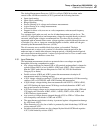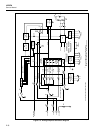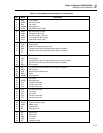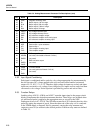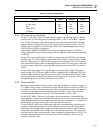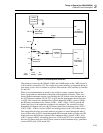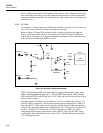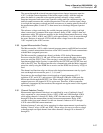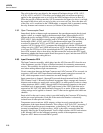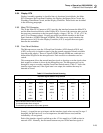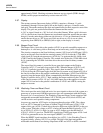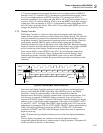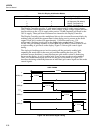
Theory of Operation (2620A/2625A)
Detailed Circuit Description
2
2-25
Table 2-6. AC Volts Input Signal Dividers
Range Drive Signal A3Z3 Divider
Resistor(s)
Overall Gain
300 mV ACR1 111.1 kΩ 2.5
3V ACR2 12.25 kΩ || 111.1 kΩ 0.25
30V ACR3 1.013 kΩ || 111.1 kΩ 0.025
150/300V ACR4 none 0.0025
The output of the buffer is ac-coupled by A3C15 and A3C16 to the true-rms ac-to-dc
converter A3U6. Discharge JFET A3Q13 is switched on to remove any excess charge
from the coupling capacitors A3C15 and A3C16 between channel measurements. A3C17
provides an averaging function for the converter, and resistor network A3Z1 divides the
output by 2.5 before sending the signal to the active ac volts filter. Analog processor
switch S81 connects the output of the active filter to HI of the A/D Converter.
Components A3R29, A3R30, A3C26, and A3C28 provide filtered power supplies
(+VAC and -VAC) for the ac buffer, the ac switch JFETs, and the rms converter.
2-57. Frequency 2-1.
After any dc component is blocked by capacitors A3C15, A3C16, and A3C31, the output
of the ac buffer is used to determine the input frequency. This signal is sent to the ACBO
pin of analog processor A3U8 and switched to the internal frequency comparator and
counter circuit by S42.
2-58. Passive and Active Filters
The passive filters are used for the dc voltage and ohms measurements. For most ranges,
capacitors A3C14 and A3C11 are switched into the measurement circuit in front of the
A3U8 A/D Converter by switches S86, S87, and S88. These capacitors act with the 100-
kΩ series resistance provided by A3R42 or A3Z4 to filter out high-frequency noise. For
the 300-kΩ range, only A3C14 is switched in by switches S86 and S85. For the 3-MΩ
and 10-MΩ ranges, A3C11 or A3C14 are not switched in to keep settling times
reasonably short.
Between channel measurements, the passive filters are discharged by JFET A3Q2 under
control of Microcontroller A3U9 through comparator A3U14. When the ZERO signal is
asserted, A3R14 pulls the gate of A3Q2 to ground, turning the JFET on and discharging
A3C11. At the same time, zeroing of filter capacitors A3C14 and A3C27 is
accomplished by having the Analog Processor turn on internal switches S2, S86, and
S87.
The active filter is only used for ac voltage measurements. This three-pole active filter
removes a significant portion of the ac ripple and noise present in the output of the rms
converter without introducing any additional dc errors. The active filter op-amp within
A3U8, resistors A3R20, A3R17, and A3R16, and capacitors A3C7, A3C10, and A3C6
form the filter circuit. This filter is referenced to the LO input to the a/d converter within
A3U8 by the op-amp. The input to the filter is available at the RMSO pin, and the output
is sent to the RMSF pin of A3U8. Switches S80 and S82, which are turned on prior to
each new channel measurement, cause the filter to quickly settle (pre-charge) to near the
proper dc output level.



